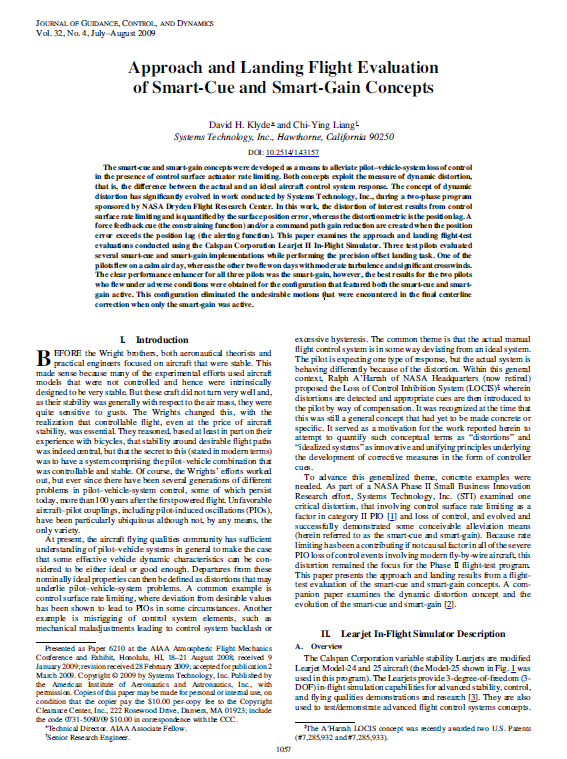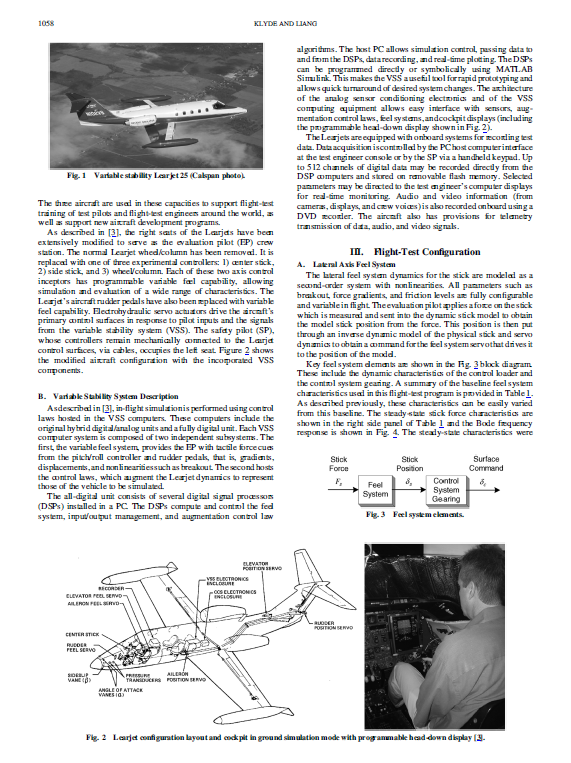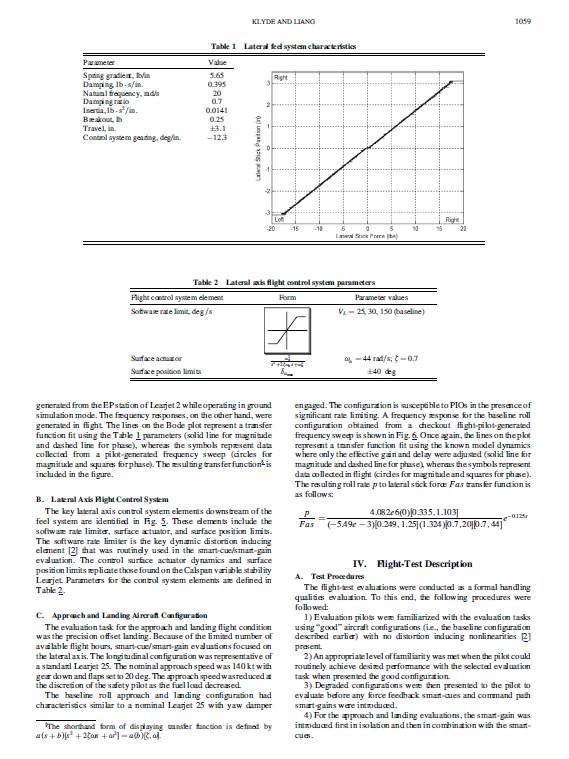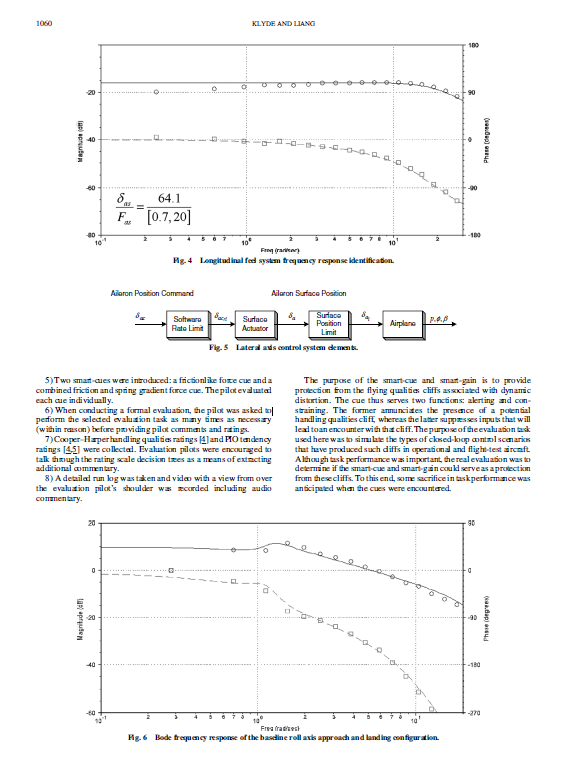
Approach and Landing Flight Evaluation of Smart-Cue and Smart-Gain Concepts
The smart-cue and smart-gain concepts were developed as a means to alleviate pilot–vehicle-system loss of control in the presence of control surface actuator rate limiting. Both concepts exploit the measure of dynamic distortion, that is, the difference between the actual and an ideal aircraft control system response. The concept of dynamic distortion has significantly evolved in work conducted by Systems Technology, Inc., during a two-phase program sponsored by NASA Dryden Flight Research Center.
Download Now


